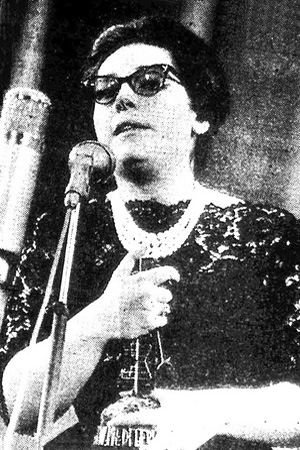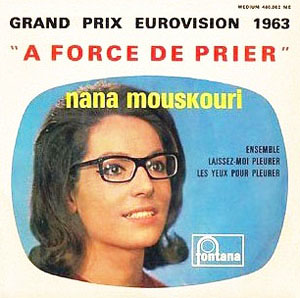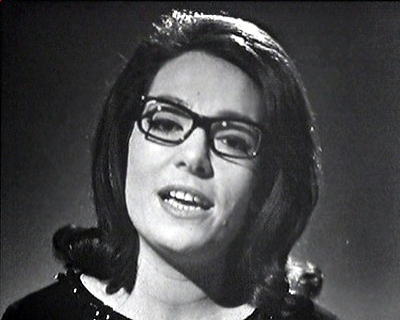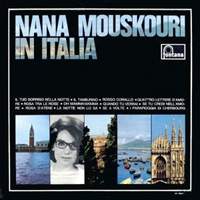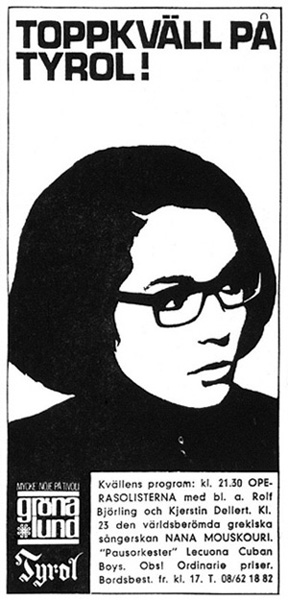The ten-year journey
1957-1967
The first ten years of a singer are usually decisive. His talent, his experience and his success give us an idea of the scale that his career will take. So it's the case of Nana who one day of 1957 has to sing a song onboard the aircraft carrier The Forrestal visiting Piraeus. The enthusiasm of the 4,000 American sailors gathered on the port ensures that she the show lasts two hours. Following that spontaneous triumph, her career keeps on progressing. Here is, ten years later, the portrait of each country where Nana has established her first roots.
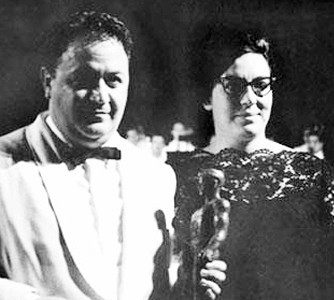 |
GREECE
After several years studying classical singing at the Conservatory of Athens, Nana turns to jazz, the musical style for which she has more affinity. She begins her career on the radio and in the clubs. Her meeting with the composer Manos Hadjidakis in 1958 is decisive. She rediscovers the folklore of her country and the new Greek Song inspired from it. Thanks to the texts of the poet Nikos Gatsos, Nana is touched by the beauty of the words that teach her to dream. Winner at the Greek Song Festival in 1959 and in 1960, she becomes the most popular singer in her country. "Kapou iparhi i agapi mou", "To kyparissaki" and of course "Ta pedia tou Pirea" are among her greatest hits.
|
SPAIN
Her talent and her fame lead her to represent her country at the Mediterranean Song Festival in Barcelona in 1960. With the song "Xypna agapi mou", she wins the first prize of the Spanish tourism. Her compatriot Alekos Pantas follows with the silver trophy. During this first trip abroad, Nana receives offers from the biggest European and American recording companies. But she remains loyal to Philips France which has already approached her for a series of recordings. Spain keeps alive the memory of this triumphant visit. Her first Greek songs and most of her French songs are released. Nana carries that country in her heart and sings during the engagement of the future King Juan Carlos with Sophie of Greece. From 1961 to 1967, she returns to make several TVs appearances and records in Spanish. Six titles are released in 1965 and 1966.
|
|
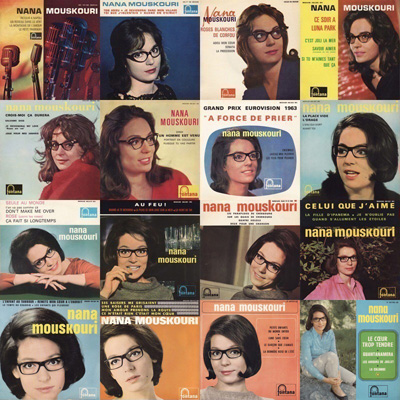 |
FRANCE
Her first visit in Paris takes place in February 1961. She records her first songs in French and she meets the team that gradually takes over her career. Eighteen months later, she returns to settle there and learns the language. Everything in done in order to make her succeed; she is advised about her look and her repertoire is reviewed. Recipient of the Grand Prix du Disque for her Greek songs, she performs on three Parisian stages: at the Olympia in the Georges Brassens show, in the second part at Bobino and at La Tête de l’Art. Her 16 EPs demonstrate her evolution and her progress. In France, although millionaire of the disc, her team believes that she has not yet reached her full popularity. Her versions of "Les parapluies de Cherbourg" and "L’enfant au tambour" will travel throughout the world.
|
GERMANY
With the film "Never on Sunday", the world rediscovers Greece and its music. In June 1961, the documentary "Traumland der Sehnsucht" (Greece, Dreamland of Desire) wins a Silver Bear at the Berlin Film Festival. Nana, the performing singer, attends to it. Enthusiastic, her record company asks her to record two songs in German. That is how "Weisse Rosen aus Athen" is sold over a million copies and earns her a gold record. "Ich schau den weissen Wolken nach", her second single, finds 500,000 takers. And following the hits "Am Horizont Irgendwo" and "Rote Koralen" she does two tours with other singers. The one who is called the voice of nostalgia regularly returns to Germany to participate in TV shows. Each time she feels welcomed. To this day, Nana owes them three of her eight million records. Les chansons allemandes de cette période suscitent la curiosité des autres firmes Philips qui décident à leur tour de les sortir. The German songs of that period arouse the curiosity of the other Philips companies who also decide to release them.
|
|
|
BENELUX
BELGIUM: In January 1963, Nana gets a one-week contract in Brussels at Ancienne Belgique in a program of various artists. She sings her French hits. In this bilingual country, her records are imported from France and from the Netherlands.
NETHERLANDS: Nana makes her first public appearance at the Grand Gala du Disque 1962. At the same time, The Athenians, the group with whom she made her debut, are employed at the Blue Note in Amsterdam. On occasions, she joins them. In the Netherlands are released her German, English, French records and the Dutch ones.
LUXEMBOURG: The French public hears her for the first time on the Radio Station RTL. In March 1962, she is presented with the Silver Lion for the most popular singer on the airwaves. The following year, Nana has the honor to represent Luxembourg at the Eurovision Song Contest with the song "À force de prier".
|
ENGLAND
"The white rose of Athens" is known long before Nana travels to England. During the first quarter of 1963, she makes several round trips to honour her commitments; recording sessions at Marble Arch Studio, the UNICEF Gala for the album "All Star Festival" and the Eurovision, which that year is held in London. Nana doesn't win the contest. However, it makes her known throughout Europe and the producer of the programme, Yvonne Littlewood, as the singer Harry Belafonte notice her. In addition to her singles recorded there, in the record shops, there are also her two American albums.
|
|
|
ITALY
Nana learned her first snippets of Italian from her mother when she was a child. Later, she studied it at the Conservatory through the arias. From 1963, she is asked to record the Italian versions of her hits. They are selling very well, come out in many countries and are available on sheet music. The television invites her to participate in a dozen variety shows. Despite little practice, she can answer the interviews in their language. "In Italia", a compilation of memories, is set on the market. It illustrates very well these years of success in that country.
|
SCANDINAVIA
DENMARK: In September 1964, Nana is invited to sing at Fredensborg Palace. An evening is held in honor of Princess Anne-Marie, who, two weeks later, will marry King Constantine of Greece. Diplomats, politicians and several royals attend her mini-concert of Greek songs with delight.
SWEDEN: Nana gets a contract for a serie of eight concerts in Stockholm in August 1966. She sings in the late evening on the main stage of the amusement park Gröna Lund. As in the rest of Scandinavia, few records are pressed. They are mostly imported from the Netherlands or from England and Germany.
|
|
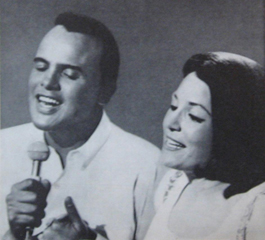 |
UNITED STATES
The members of the Hellenic Communities are the first to know Nana in America. In June 1962, she crosses the Atlantic to record her first album. In order to immerse herself in the New Yorker musical universe, the producer Quincy Jones makes her listen records and takes her to see concerts. So is born "The Girl from Greece Sings", an album of ballads with a taste of jazz. Between 1964 and 1966, Nana is a guest singer in the Harry Belafonte show, one of the biggest names of the time. Together, they perform in the college-campus halls and in the major theatres and record an album of Greek songs. Since her beginnings in her own country, Nana didn’t have a lot of opportunites to perform on stage and up to this time her career mainly concentrated to recording sessions, participations in variety programs and interviews. But during these four tours, she acquires a real stage experience. Meanwhile is released her second English album, this one produced by Bobby Scott. |
QUEBEC AND CANADA
In 1965, Harry Belafonte introduces her in his show in Montreal, Toronto and Vancouver. On this occasion, Nana chooses to sing the folk song "Un Canadien errant". The bonds are created. In Quebec, she is known for her French repertory. The 10 hits she got within two years confirm that she will come back to give her own concerts. This happens at the beginning of 1967 with a 16-city tour. Nana presents what is called a "one-girl-show" and ensures both parts of the program with her ensemble The Athenians. This concept rather North American is also new for her since in Europe the star only uses to sing during the second part. So this achievement just crowns her ten-year journey.
|
|
Without knowing it or it be mentionned in the press, Quebecers are privileged. Moreover, this solo tour is not the unique exclusivity they enjoy. In fact, the Canadian discography, the most complete of all, gives an excellent summary of all her recordings. There are 11 albums, all under Fontana label: four in French, two in English, two in Greek, two in German and one in Italian.
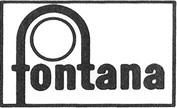
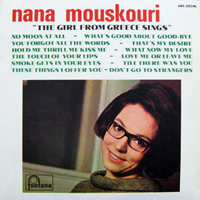
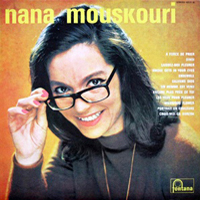
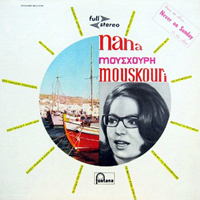
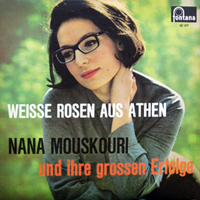
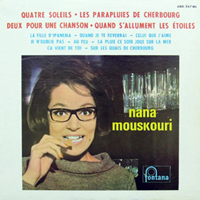
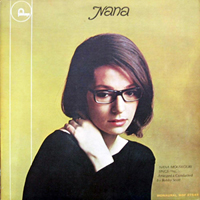
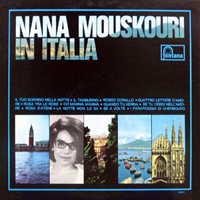
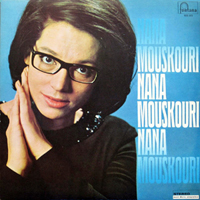
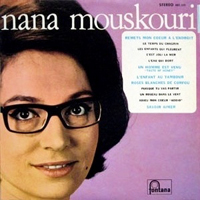
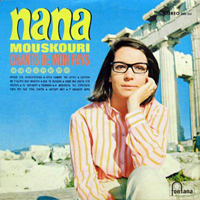
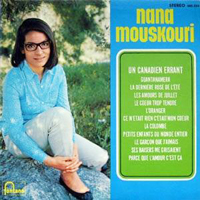
A PROMISING JOURNEY
Since her impromptu song recital in the port of Piraeus in 1957, Nana has come a long way. She participated in festivals, sang for audiences of different nationalities and worked with renowned musicians and singers. Many awards also confirmed her talent and the public attachment. Her promising journey is like those of Dalida, Petula Clark, and Caterina Valente. Like them, Nana has a career into half a dozen languages. With the solo tour presented in Quebec, a new step has been reached. Will the experience be repeated in other countries?

